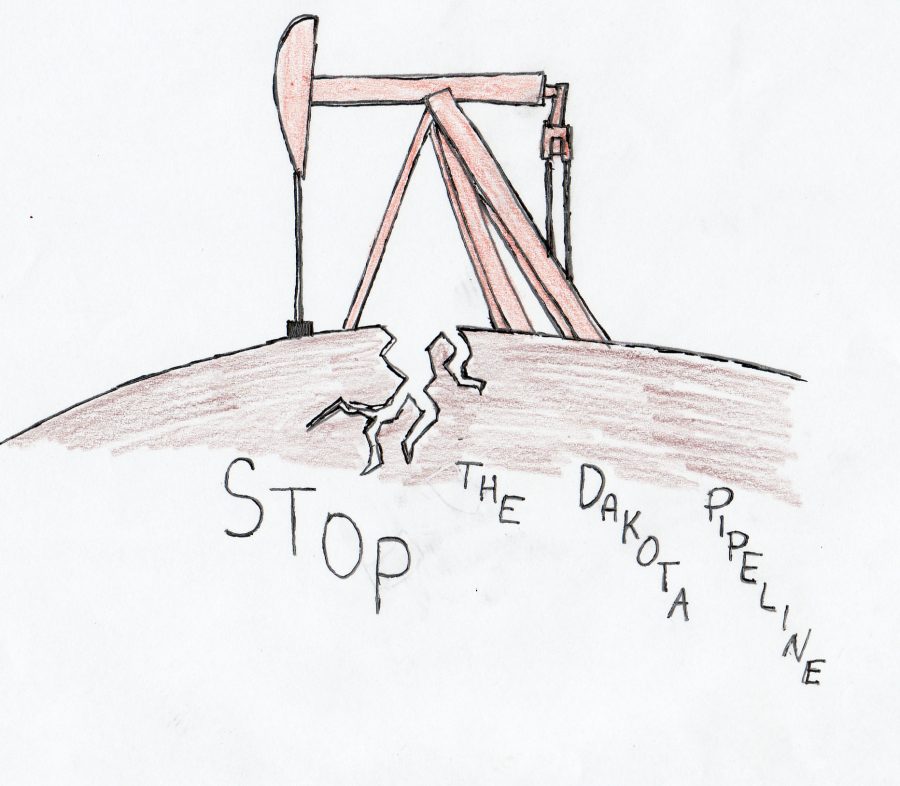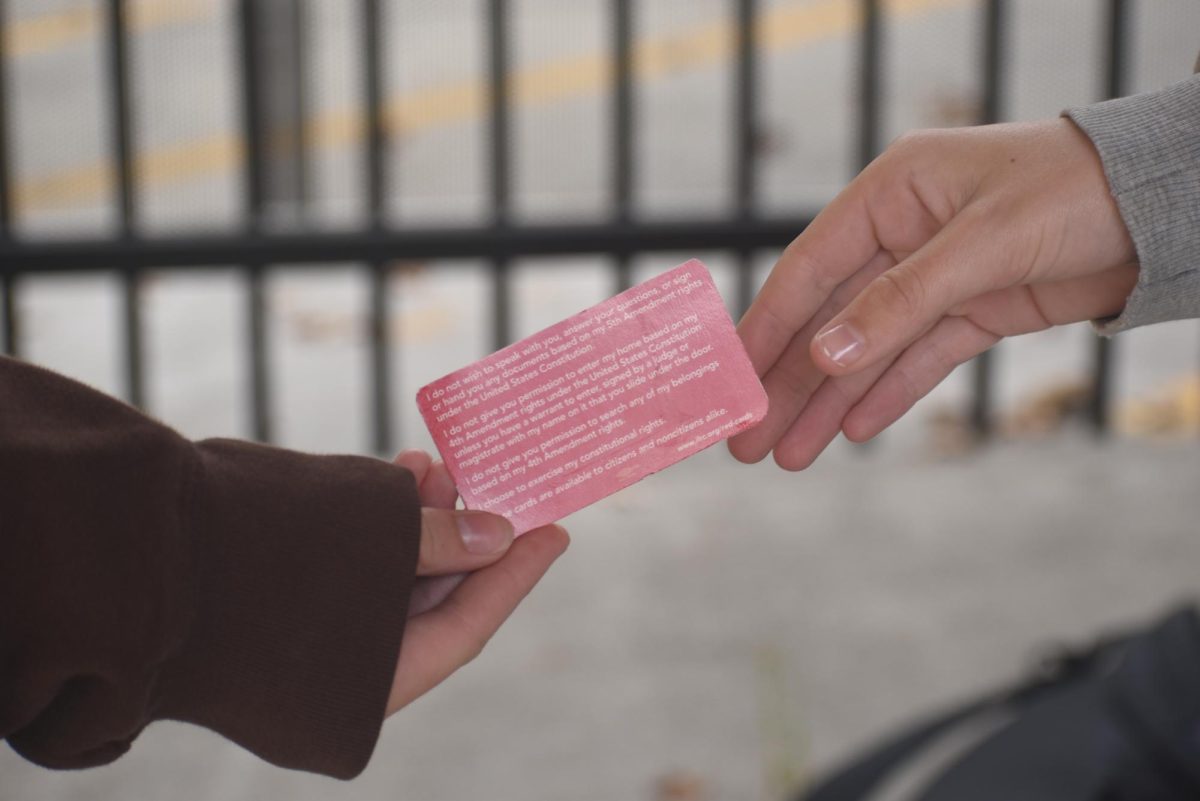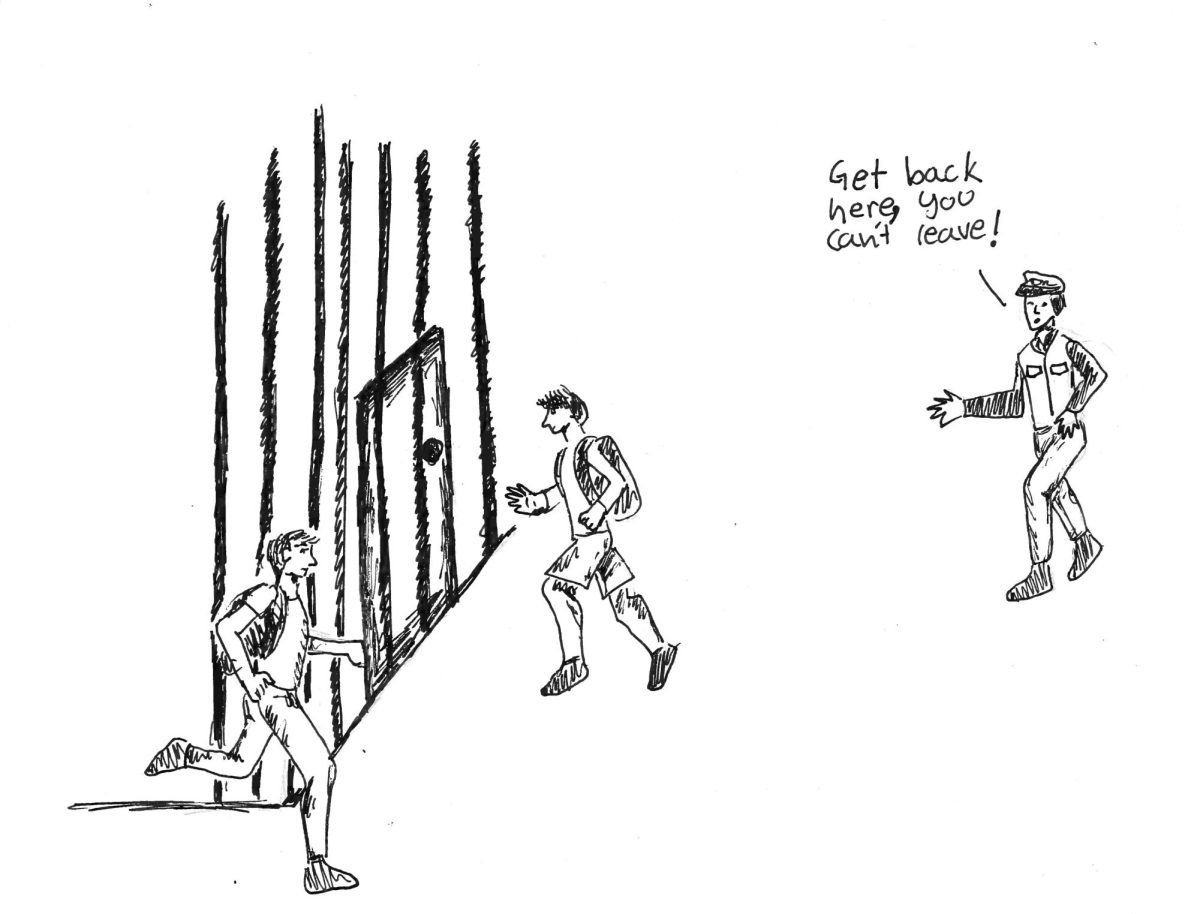The Standing Rock Sioux protest for their rights to land and water
Clarion photo Colin Stevens
September 26, 2016
Thousands of people are shaping history as they continue to protest the Dakota Access Pipeline, a $3.5 million dollar crude oil transportation system that is under construction. At the front lines of these protests are the Standing Rock Sioux Tribe of South Dakota. The pipeline runs alongside the Missouri River, where the tribe gets their drinking water. They worry that the pipeline, if implemented, would leak. In addition to that, the development of the pipeline has already destroyed burial grounds and sacred prayer sites. If continued, even more culturally significant sites and artifacts would be lost, and the risks of oil spilling into the nearby Missouri River would be high. The Standing Rock Sioux are pushing back against big oil companies that only look to make a profit, and they demand to be taken seriously.
CEO of the Energy Transfer Project, Kelcy Warren, called the protesters’ concern for water safety “unfounded.” However, pipelines like the Dakota Access have a history of leaking. In the last three years, there have been more than 200 instances of pipelines spilling in the U.S. Even the Keystone pipeline, the newest and safest to ever have been built, leaked 12 times in the first year of operation. This may not sound like a lot, but since the Dakota Access pipeline runs right under the Missouri river, where the tribe gets their drinking water, it could be a big issue. In addition to that, small cracks and leaks in the pipes won’t be detected. The pipeline will only detect spills when two percent or more of the oil being transported has been leaked. And when you consider that the Dakota Access will be transporting between 470,000-570,000 barrels of oil a day, a spill like that could be devastating to the Missouri river and the Standing Rock Sioux.
According to the tribe, the construction of the pipeline has already infringed upon their basic human rights. “It’s about our rights as Native people to this land. It’s about our rights to worship. It’s about our rights to be able to call a place home, and it’s our rights to water,” said Jesse Weahkee, a native American activist from Albuquerque. Sacred sites and burial grounds have already been destroyed during construction, and could continue. According to the Standing Rock Sioux, none of them were even consulted when the route of the pipeline was being discussed. Many argue that this is a key example of environmental racism.
Environmental racism is the placement of minority communities in toxic, or sometimes even dangerous environments. This isn’t a new phenomenon. All throughout history, minorities and lower class communities have been more likely to be living in areas with by bad air or water quality. Take the water crisis in Flint, Michigan. About 57 percent of the residents were black, and 42 percent lived under the poverty line. Because of this, many of them couldn’t afford to get new pipes or to move out. People also wonder if the government would have been quicker to respond to the crisis in Flint or the pipeline protests if the issues at hand were relevant to white and upper class individuals. It’s hard to know for sure, but our nation has a long history of treating the issues of the white, upper class with more urgency than they treat issues that are relevant to people of color.
Despite the risks, some say that the outcome of the pipeline would be mostly positive, and that it could create between 8,000 to 12,000 jobs. But are these jobs (some of them only temporary) really worth the destruction of sites valuable to Sioux culture, and the violation of their basic human rights? Energy Transfer Partners claims that it would allow the United States to be less dependant on foreign oil. Though that may be true, I believe it’s time that we moved away from oil and towards something more sustainable. The drilling of oil is causing harm to our water, air, and climate. Not only that, but the oil that is being transported through the Dakota access pipeline is crude oil. Crude oil comes from deep in the ground and is more difficult to drill. It’s also dirtier to burn, and can cause even more harm to the environment.
Greenpeace, the Sierra Club, and 30 other organizations have spoken out against the Dakota Access Pipeline. Because of these organizations and the thousands of protesters, construction has been temporarily halted until it can be determined whether or not the National Environmental Policy Act is being violated. The people of the Standing Rock Sioux tribe and their allies have worked hard for this small, yet important victory. Many have brought sleeping bags and slept overnight at construction sites for weeks on end. Some protesters were attacked by dogs and pepper sprayed. Whatever the outcome of these protests, the people of the they are educating thousands on issues of race and the environment.














